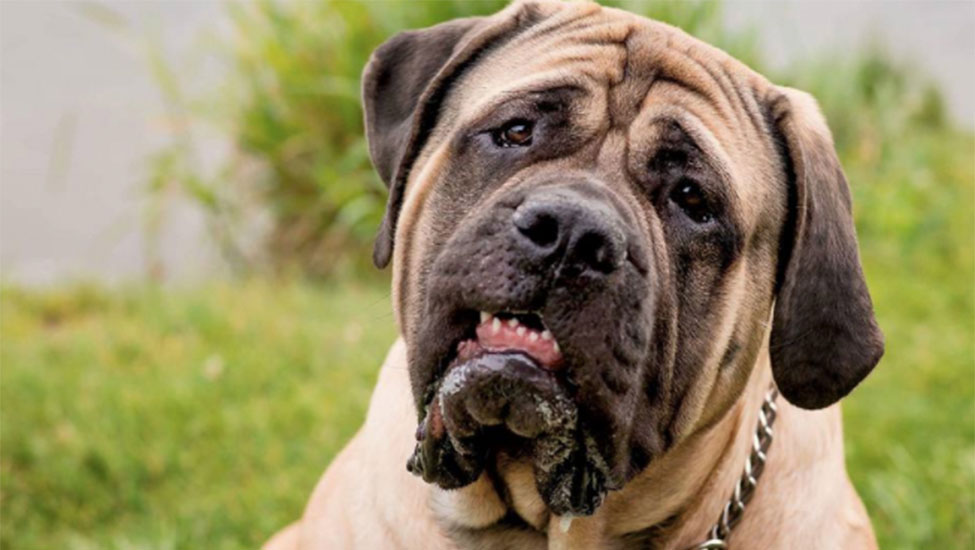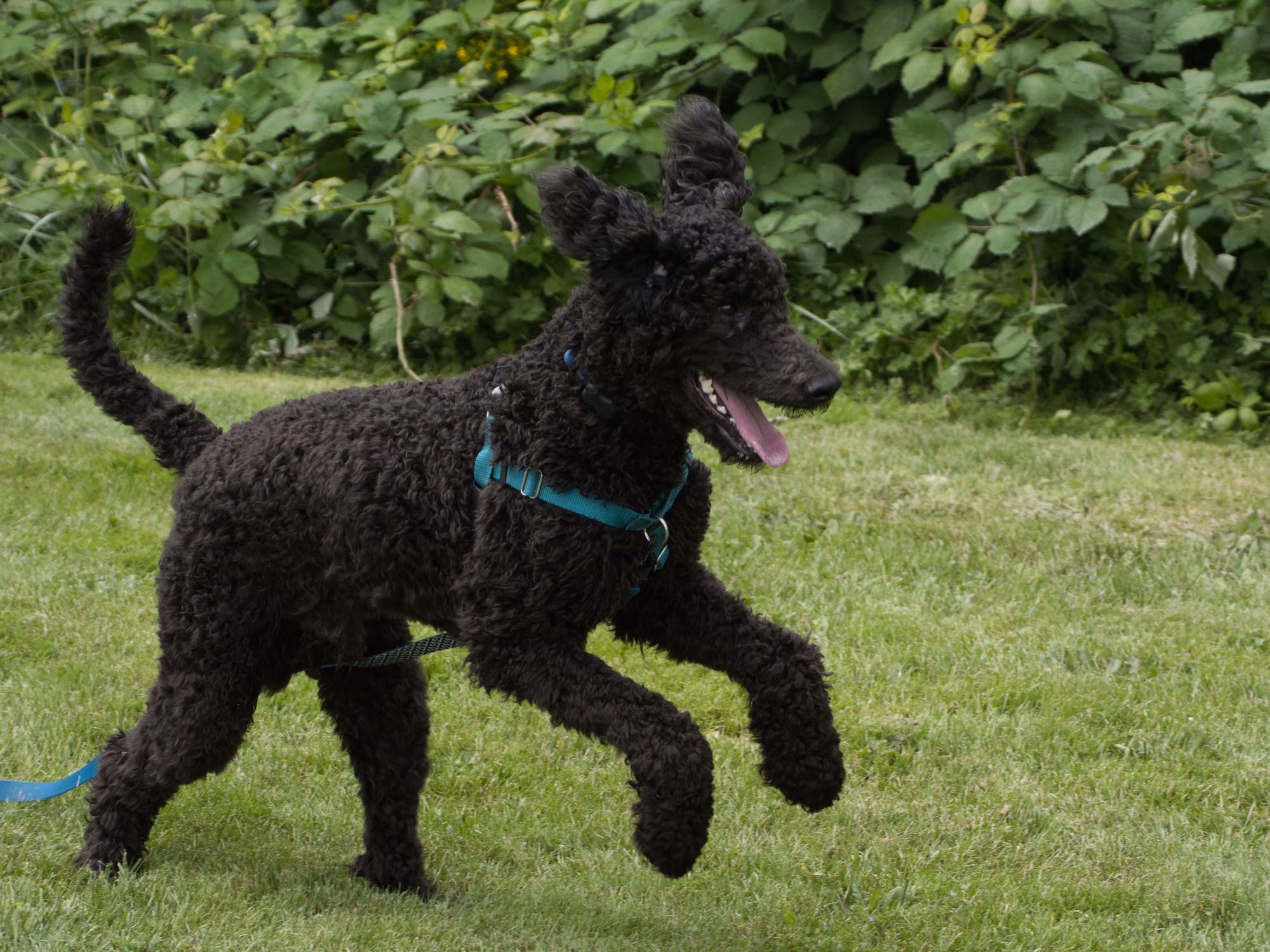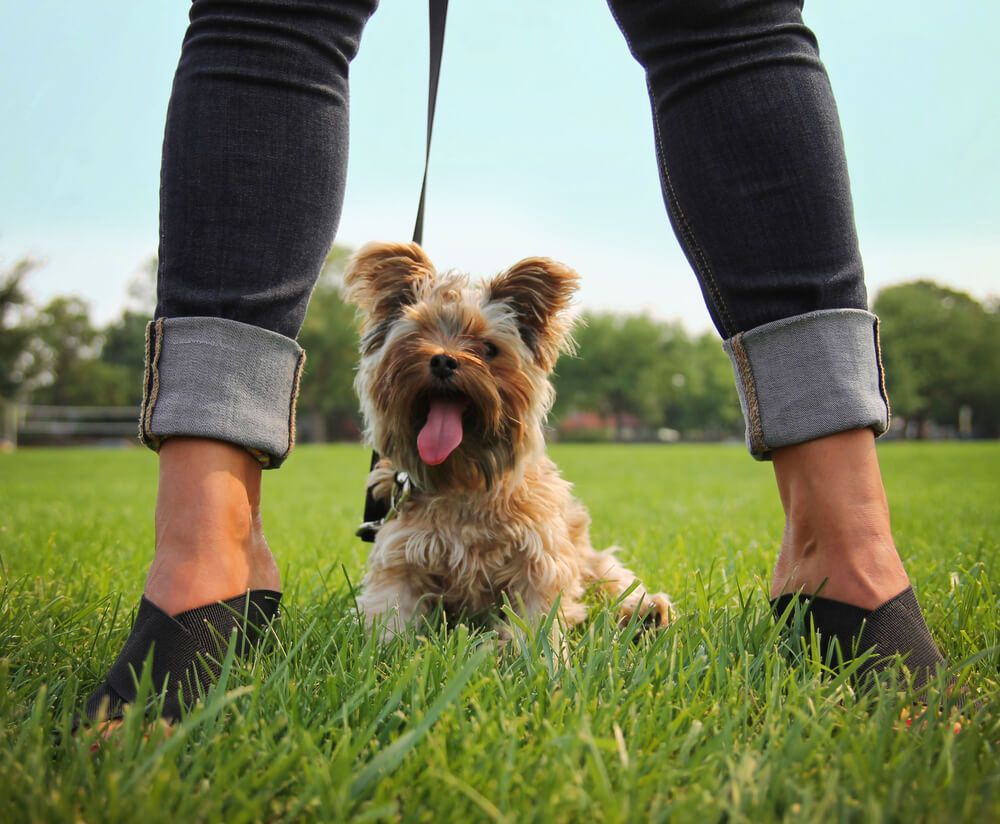Hey Ollie blog readers! We’re offering you an exclusive 60% OFF your starter box! Try now!
Sometimes, the biggest dogs have the biggest hearts—and this couldn’t be more true for Sherman the Therapy Dog. At 223 pounds, the English Mastiff has helped countless humans in hospitals and assisted living facilities, just by being his gentle giant self. But one of his greatest gifts has been supporting his human, Sherry McAllister, during her current battle with cancer. We spoke with Sherry about Sherman’s ability to bring out the best in people, and why she believes he was destined for therapy work from the very beginning.
How did you decide to bring Sherman home?
Sherman is actually the first dog we’ve ever purchased. My husband and I were always big into rescue, and all of our dogs have been rescues. But because of the health problems our last two English Mastiffs had, we decided that if we wanted to bring one home again, we wanted to buy him from a breeder so we’d know more about his background.

How would you describe Sherman’s personality?
He’s super laid back, and truly loves people—and has this weird way of knowing who needs him in a crowd. I have a special collar I put on him when it’s time for therapy work. When I get the collar out and he hears it, he starts dancing around. It’s so funny to see a 223lb dog dance—he shivers, and just gets so excited.
What was it like introducing Sherman to your other dogs?
We were fostering, and had to stop for about four months when we brought Sherman home because he was a puppy. But we still had one dog, Lily Pad, a white Pit Bull who we adopted before Sherman. And then we adopted two more dogs after Sherman: a "tiny" 80-pound French Mastiff named Ruby Sue, and Gracie Lou, a chihuahua mix who we’ve had for about a year now—they also do therapy work.

What made you decide to train Sherman as a therapy dog?
When our last two therapy dogs passed away, people were genuinely upset. So when we mentioned we were going to get another Mastiff for therapy work, people became part of the whole process of us choosing a therapy dog. Our breeder gave me a call and said, “I know which one is your dog.” When all the puppies were introduced to kids, and Sherman was the only puppy in his litter that ran straight to them, we said, “That’s the one!”
Was Sherman’s size a factor in the therapy certification process?
It depends, but size can play a role, unfortunately. One therapy group suggested I reconsider having such a large dog and to “consider the dangers.” I’ve had 3 English Mastiffs as therapy dogs! This unfortunate interaction inspired us to start our own therapy group. And so, we opened Big Love Therapy Dogs [last year].

Can you share a particularly memorable story about someone Sherman has helped?
There are so many stories. There’s one other man we visited at an extended care nursing home. His caretakers warned us to “not expect much of him because he just sits with his head down, doesn’t look anyone in the eye.” So, we went into his room and the man actually turned his head to look at Sherman, then started petting him. His caretakers were shocked. They said that he hadn’t interacted with anybody since he moved in. From then on out, he’d start coming out when Sherman came to visit.

How did Sherman’s calendar come about?
We do a lot of out-of-town visits and spend a lot of gas money taking Sherman to see the people he supports. Selling the calendar relieves the financial burden on our family to continue to do that therapy work. It also brings some lightness to some of the work he does—at hospice and nursing home care, where many of those people don’t leave their beds. Luckily, our photographer, Erika Renae Radek, does all of Sherman’s photography for free because she loves what we do.
How has Sherman played a role in supporting your battle with cancer?
I believe dogs know things before we do. For about three months before I was diagnosed, Sherman was whining and crying non-stop. I thought something was wrong. But once I went to the doctor and was diagnosed, it stopped. Immediately. Having him with me when I’m in bed, especially on my very dark days with chemo, he lays there with me non-stop. But he’s also been around for me even now that I’m stronger. As a result of the chemo, I’ve developed tachycardia, a condition where your heart rate is very high all the time. It can make me very light headed, and Sherman’s been so good for me in terms of stability and mobility. He walks alongside me instinctively whether we’re inside or outside the house.
What’s one of the biggest lessons Sherman’s taught you about therapy work?
I can’t tell you what it is about Sherman, but people just react to him in a way that’s truly touched my heart. I have people stop me on the road and cry when they meet him. I’ve actually pulled over to the side of the road so people could pet him. It’s not my job to understand why they’re crying or upset, but for some reason, we were meant to meet on that day. Sherman just pops out of the truck, they start hugging him and breaking down. I don’t question it, but I know he’s touched them in some way.
The Ollie blog is devoted to helping pet parents lead healthier lives with their pups. If you want to learn more about our fresh, human-grade food, check out MyOllie.com.
Tagged As:

The nutrition your dog needs,
the food they want.

Enjoying our articles? Subscribe our Newsletters and get new articles directly to your inbox
You might also like
18 September 2025
7 MINS READ
Shih Tzu Breed Guide: Shih Tzu Pros and Cons
Thinking about bringing home a Shih Tzu? This guide breaks down the breed’s personality, grooming needs, and whether it’s the right fit for your life.
21 July 2025
6 MINS READ
Poodle Breed Guide: Pros and Cons of Poodles
Curious about Poodles? This detailed Poodle breed guide breaks down the key pros and cons, plus tips on caring for Standard, Miniature, and Toy Poodles.
25 March 2025
6 MINS READ
Yorkie Dog Breed Guide: Yorkie Pros & Cons
Thinking about adding a Yorkie to your family? This Yorkie dog breed guide covers the pros and cons, care tips, and what to expect with these tiny, spirited pups.







